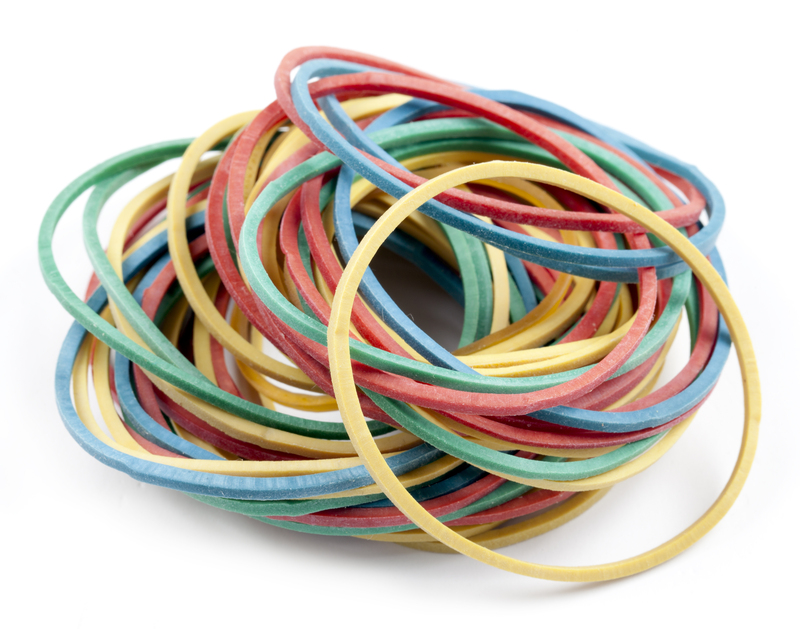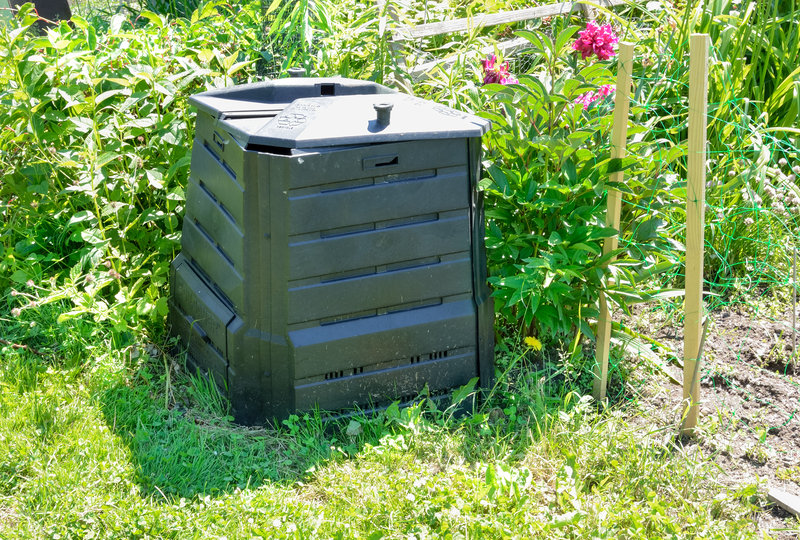Journey to Sustainability: Plastics to Evade
In the quest for a healthier planet, individuals, businesses, and governments alike are facing a pressing challenge: reducing plastic waste. The journey to sustainability often starts with daily choices--especially regarding which plastics to use or avoid. By identifying and evading the most problematic plastics, we can significantly shrink our environmental footprint. This comprehensive guide delves into the plastics to evade, why they matter, and sustainable alternatives for a cleaner tomorrow.
Understanding Plastics: The Ones to Evade
Plastics have revolutionized industries, yet their resilience and versatility have become a double-edged sword. Many plastics take hundreds of years to decompose, leaching toxins and turning oceans into vast garbage patches. By focusing on plastics to evade, we empower ourselves to make eco-friendly decisions.
What Are Single-Use Plastics?
- Definition: Single-use plastics are products designed for one-time use before disposal, bringing convenience at the cost of immense environmental damage.
- These plastics include everyday items such as straws, cutlery, packaging, and plastic bags.
- The problem lies in their short lifecycle versus their long-lasting impact on the planet.
Evading single-use plastics is a vital step in the journey toward sustainability. According to the United Nations, over 400 million tons of plastic are produced annually, half of which are single-use. Only 9% is recycled. The rest ends up in landfills, waterways, and even in the food chain.
Types of Plastics to Evade
Let's identify the most pervasive and damaging types of plastics:
- Polyethylene Terephthalate (PET or PETE) - #1
Commonly used in: Water and soft drink bottles- Designed for single-use; repeated use can leach chemicals.
- Often recycled, but contamination issues reduce efficacy.
- High-Density Polyethylene (HDPE) - #2
Commonly used in: Milk jugs, detergent bottles
Durable, but still contributes to plastic pollution and is not biodegradable. - Polyvinyl Chloride (PVC) - #3
Commonly used in: Packaging, toys, pipes
Contains harmful chemicals like phthalates, dioxins, which can migrate into food. - Low-Density Polyethylene (LDPE) - #4
Commonly used in: Plastic bags, six-pack rings
Difficult to recycle; often ends up in aquatic environments, harming wildlife. - Polypropylene (PP) - #5
Commonly used in: Yogurt containers, straws
Somewhat more recyclable than others, but still a significant pollutant. - Polystyrene (PS or Styrofoam) - #6
Commonly used in: Takeaway containers, coffee cups
Infamous for being almost impossible to recycle and for breaking into microplastics.
Evading these types of plastics whenever possible forms the cornerstone of a sustainable journey. Not only do they remain in our environment for centuries, but they also pose risks to human and animal health through leaching toxic substances.

The Impact of Problematic Plastics
Environmental Consequences
- Non-biodegradability: Most plastics take hundreds or thousands of years to decompose, leading to persistent pollution.
- Harm to wildlife: Animals often mistake plastics for food, causing injury or death through ingestion or entanglement.
- Microplastic contamination: Over time, large plastic items break down into tiny fragments that permeate the soil, water, and even enter the food chain.
The World Wildlife Fund estimates that an average person could ingest up to 5 grams of microplastics every week--the equivalent of a credit card--via food, water, and air. This alarming figure underscores the urgency to evade harmful plastics.
Human Health Risks
- Leaching of chemicals: Plastics like PVC and Styrofoam release toxic chemicals that may disrupt hormones and increase cancer risk.
- Bioaccumulation: Toxins from plastics accumulate up the food chain, impacting both wildlife and humans, especially through seafood consumption.
Chronic exposure to plastic-derived chemicals such as bisphenol A (BPA), phthalates, and dioxins is linked to hormonal disruptions, developmental issues in children, and adverse reproductive health effects. Choosing to evade plastics directly contributes to healthier communities.
Alternatives to Plastics: Paving the Way for Sustainability
Swapping out problematic plastic products for greener alternatives is essential in the journey to sustainability. Here's how you can make a difference:
1. Reusable Containers and Bottles
- Opt for stainless steel or glass instead of PET bottles.
- Many companies now offer stylish and functional alternatives perfect for water, coffee, and food storage.
2. Compostable or Biodegradable Packaging
- Switch to packaging made of cornstarch, paper, or bamboo fibers.
- Ensure materials are truly compostable and meet certified standards.
3. Cloth Shopping Bags
- Say no to LDPE plastic bags; bring reusable cloth or jute bags instead.
- These bags last longer and can be washed and reused multiple times.
4. Silicone and Beeswax Wraps
- Instead of using polyethylene-based cling film, opt for reusable silicone lids or beeswax wraps.
- An eco-friendly choice for keeping food fresh.
5. Wooden and Bamboo Cutlery
- Replace plastic cutlery with sustainable materials like bamboo, which is biodegradable and renewable.
By integrating these swaps into your routine, you'll be actively contributing to a plastic-free lifestyle and fostering a cycle of responsible consumption.
Policy and Community Action: Building a Plastic-Free Society
Global Initiatives to Evade Plastics
- EU Ban on Single-Use Plastics: The European Union has enacted sweeping bans on many single-use plastics, including cutlery, plates, and straws.
- Plastic Bag Bans: Countries and cities worldwide have imposed levies or outright bans on plastic bags, encouraging alternatives.
- Producer Responsibility: Extended Producer Responsibility (EPR) policies force brands to manage the lifecycle of their plastic products.
Local & Individual Action
- Community cleanups: Organize or participate in local cleanup efforts to remove plastics from environments they threaten.
- Education campaigns: Inform friends, family, and colleagues about the dangers of plastics and the benefits of sustainable alternatives.
- Refuse and Redesign: Proactively refuse single-use plastics--ask for alternatives and demand businesses shift towards sustainable packaging.
Every small action compounds; if individuals, businesses, and governments work in tandem, the impact can be transformative.
Plastics to Evade: Consumer Guide
Making conscious choices at the shop, restaurant, or online marketplace can make a significant difference. Here's an actionable checklist:
- Read Labels:
- Avoid products with recycling codes 3 (PVC), 6 (PS), and 7 (Other: polycarbonate, BPA).
- Opt for Bulk Buying:
- Reduces packaging waste, and many stores allow you to bring your own reusable containers.
- Say No to Extras:
- Politely decline disposable straws, lids, cutlery, and plastic bags.
- Choose Products with Minimal or Recyclable Packaging:
- Support brands using cardboard, glass, or plant-based materials.
Empower yourself with knowledge so you can actively choose products that align with the path to sustainability.
Innovations and the Future: Toward a Plastic-Free World
The movement to evade plastics is sparking innovation across industries:
- Bioplastics: Derived from renewable sources such as corn or algae, these break down more readily, though challenges in scalability and proper composting remain.
- Recycled Ocean Plastic: Brands are using "ocean-bound" plastic waste to create shoes, bags, and clothing, giving trash a new life.
- Eco-friendly Packaging: Advances in edible packaging--made from seaweed, rice, or potato starch--offer promising options for single-use items.
Supporting these innovations with your wallet accelerates their adoption and drives further development of sustainable solutions.

Frequently Asked Questions about Plastics to Evade
Q: Are biodegradable plastics a safe alternative?
While biodegradable plastics offer improved breakdown rates, not all are created equal. Many require industrial composting facilities to decompose fully and won't break down in landfills or the natural environment. Read certifications carefully and check for compostable labeling.
Q: What is the role of recycling in reducing plastic waste?
Recycling is important but not a silver bullet. Many plastics are technically recyclable but are not processed due to contamination or lack of facilities. Focus on reducing and evading plastics first, and recycle where possible.
Q: How can I motivate others to evade plastics?
Lead by example! Share information, provide alternatives at events, support local policies, and use your voice on social media to spread awareness about the benefits of evading harmful plastics.
Conclusion: Your Sustainable Journey Starts Now
The journey to sustainability is ongoing, but every step matters. By choosing to evade problematic plastics, seeking out sustainable alternatives, and inspiring others, you become part of a growing global movement. Whether it's swapping out single-use bottles, refusing plastic cutlery, or spreading awareness, your actions reverberate.
Let's commit to a cleaner, healthier future--one where plastic pollution is a relic of the past, and a sustainable world is our legacy.